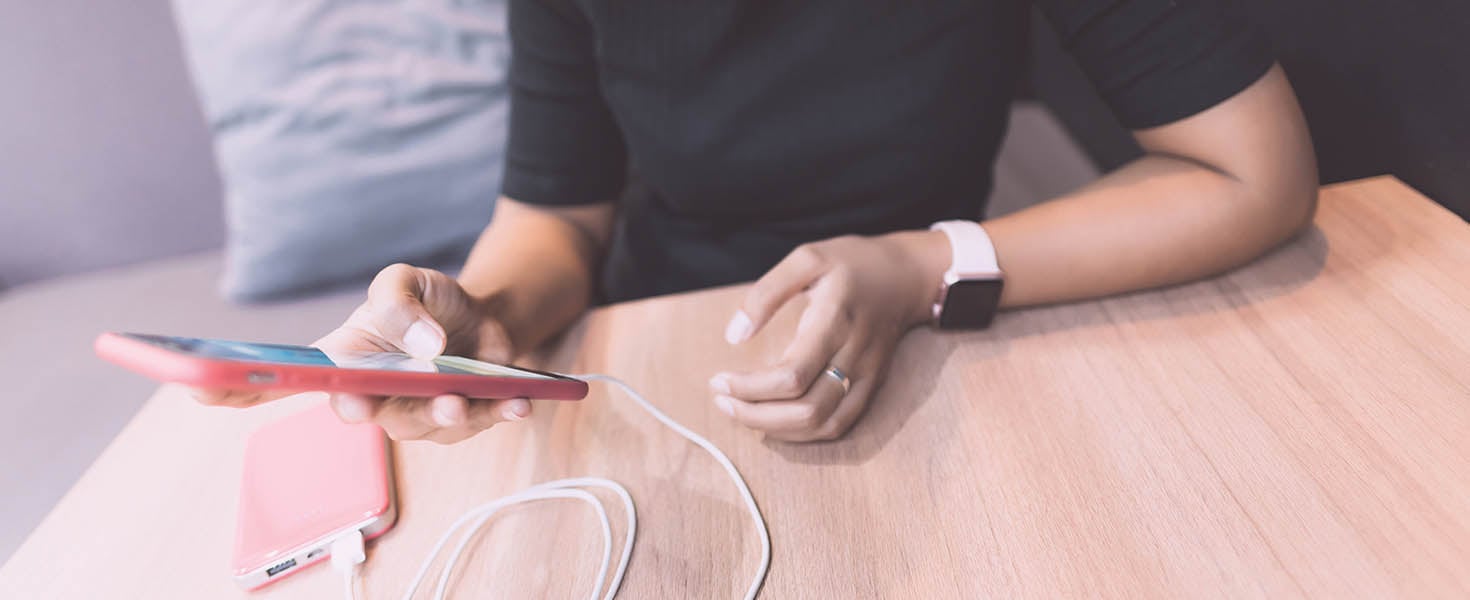
Most of us travel with an assortment of devices—from smartphones, laptops, and tablets to cameras, smartwatches, and headphones—that need periodic recharging. As more of these devices go in our travel bags, their accompanying charging gear needs to come along, too. We talked with Nathan Maxwell, owner of Communication Concepts, Inc., which provides cybersecurity and IT support in the Kansas City metro area, about how to safely charge devices while traveling. Here’s his advice.
START YOUR TRIP FULLY CHARGED
“You want to walk out the door carrying as much electricity with you as you can,” Maxwell advises. Ensuring a full charge before leaving home often has a secondary benefit: In most cases, the content on our laptops and smartphones is backed up while our devices are connected to the charger and on our home Wi-Fi. Backing up your devices before travel is always a good idea.
DON’T PASS UP A CHANCE TO CHARGE
If your phone is at 90 percent while you’re waiting for your next flight and there’s an available outlet, plug it in to charge it. You never know how long you might sit on an airplane, and it’s ideal to arrive with an operational phone. If you’re sitting in the car on a long road trip, keep your device plugged in. Most newer devices protect from overcharging, but if you’re concerned, check with the manufacturer.
PROTECT YOUR DATA
Just because you can connect your device doesn’t mean it’s safe to do so. If you’re plugging into an unknown USB port at a train station or a hotel, for example, use a data blocker. This small, inexpensive gadget fits between the cable and charging port to physically block anyone from accessing your data or sending a virus.

BRING AN EXTERNAL BATTERY PACK
Two tips from Maxwell: Consider amps (20,000 – 25,000 mAh for a phone and double for a laptop) rather than compactness since most of us don’t carry these packs in our pocket. Also, don’t buy cheap as you could be attaching the power bank to a $1,000 device. Note that loose lithium batteries as well as lithium ion metal batteries, including external battery chargers, are prohibited in checked luggage; they must be packed in your carry-on bag. For more information, see the FAA regulations on batteries.
DON’T FORGET CABLES
You’ll likely be traveling with enough devices to need multiples of the same cable and a variety of connectors. A USB squid has just one cable but offers multiple connectors. A USB wall charger with multiple ports allows you to charge several devices—even a laptop—simultaneously at maximum speed.
HAVE A DESIGNATED TRAVEL KIT, AND PRACTICE USING IT
Maxwell has a travel kit with one of every type of cable/connector he’ll need for the devices he travels with, and he always keeps the kit packed and ready to go. Be sure to test your gear with the charging devices and cables before your trip so that there are no surprises.
CONSERVE YOUR DEVICES’ BATTERIES WHEN YOU CAN
Keep the screen off when not needed, and turn the brightness down when possible. Turn off Wi-Fi and Bluetooth if you’re not using them. Also, carefully manage apps that operate in the background, and keep unused tabs and programs closed.
